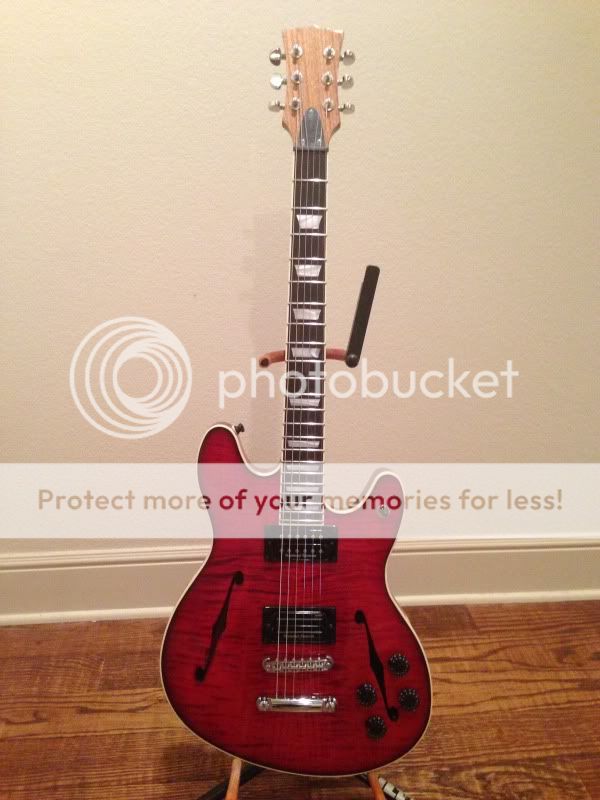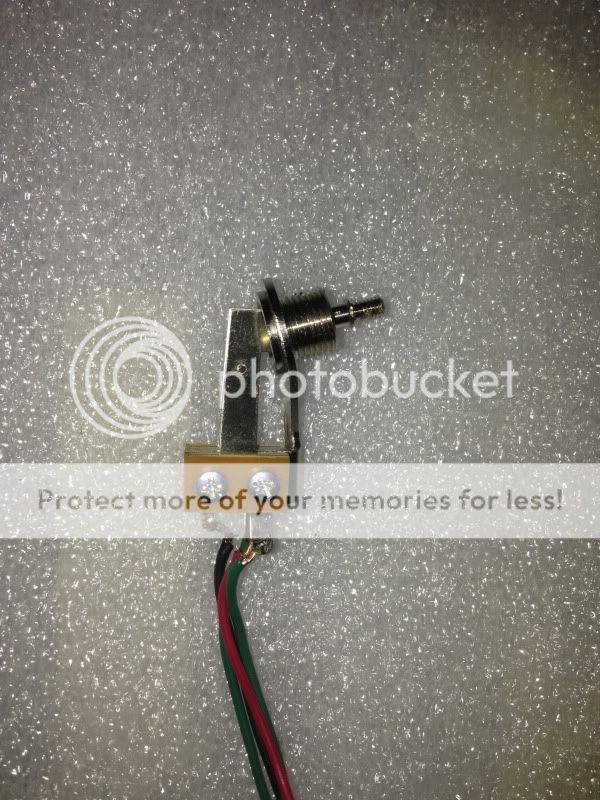Hey guys,
This is my first post, so any help for a new guy around here is greatly appreciated.
I'm working on my 2nd Warmoth guitar. The first was a Butterscotch Blonde Telecaster, and now I'm working on a Mooncaster with red dye and an amazing walnut neck with ebony fingerboard.
Here's my problem: I got it all wired up, and when plugged in it buzzes like crazy. I'm not talking about string buzz, I'm talking about a buzzing/humming sound coming through the amp that goes away when I touch the strings or the bridge. I'm aware that this buzzing is indicative of a shielding issue, and I verified that all of the solder connections and ground connections are good with a multimeter. I'm using a SD 59 in the neck and a Dimebucker in the bridge for now (probably soon to be replaced by a Pearly Gates that I have on the shelf).
So here's my question: How would you shield a mooncaster with an F hole in the electronics cavity? I can't apply shielding paint up in the "horn" where the switch sits, and likewise I can't get up there with tape. I also can't tape over the F hole, and I don't want anything to be visible through the hole, either.
I think Fender probably uses shielding paint in the cavity before laminating the cap to the body, but obviously Warmoth doesn't do that. I'm going to re-wire with shielded, grounded wire and see if that helps. I may also build some small "pot covers" for each of the pots and ground those, too. Does anyone have any other suggestions?
A note of caution for anyone thinking about building a Mooncaster - the area where the switch sits on mine wasn't relieved enough for anything but the shortest of switches. Even the Switchcraft "Short" switch wouldn't work. When I spoke to the folks at Warmoth they apologized and said these things happen with new designs. I'm still not sure what switch will work, but I'm thinking I may be able to use a blend pot to roll between the pickups.
Thanks in advance!
This is my first post, so any help for a new guy around here is greatly appreciated.
I'm working on my 2nd Warmoth guitar. The first was a Butterscotch Blonde Telecaster, and now I'm working on a Mooncaster with red dye and an amazing walnut neck with ebony fingerboard.
Here's my problem: I got it all wired up, and when plugged in it buzzes like crazy. I'm not talking about string buzz, I'm talking about a buzzing/humming sound coming through the amp that goes away when I touch the strings or the bridge. I'm aware that this buzzing is indicative of a shielding issue, and I verified that all of the solder connections and ground connections are good with a multimeter. I'm using a SD 59 in the neck and a Dimebucker in the bridge for now (probably soon to be replaced by a Pearly Gates that I have on the shelf).
So here's my question: How would you shield a mooncaster with an F hole in the electronics cavity? I can't apply shielding paint up in the "horn" where the switch sits, and likewise I can't get up there with tape. I also can't tape over the F hole, and I don't want anything to be visible through the hole, either.
I think Fender probably uses shielding paint in the cavity before laminating the cap to the body, but obviously Warmoth doesn't do that. I'm going to re-wire with shielded, grounded wire and see if that helps. I may also build some small "pot covers" for each of the pots and ground those, too. Does anyone have any other suggestions?
A note of caution for anyone thinking about building a Mooncaster - the area where the switch sits on mine wasn't relieved enough for anything but the shortest of switches. Even the Switchcraft "Short" switch wouldn't work. When I spoke to the folks at Warmoth they apologized and said these things happen with new designs. I'm still not sure what switch will work, but I'm thinking I may be able to use a blend pot to roll between the pickups.
Thanks in advance!





